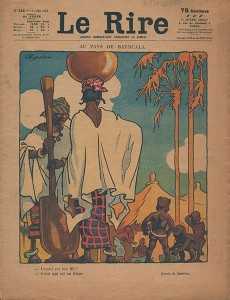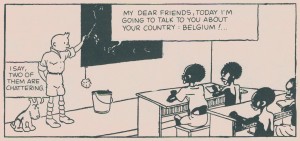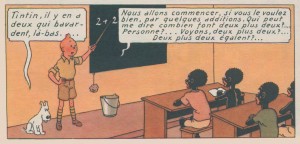Click on an image to enlarge; click on a title to be taken to that item in our catalog.
Exhibit Cases |
|
| The title of this cover cartoon by Gervèse is possibly a reference to the novel Batoulala by René Maran (born on the island of Martinique but educated in France), which was awarded the French Goncourt Prize in 1921. | |
|
The Belgian cartoonist Hergé originally serialized this book, the second volume in the word-wide bestselling Tintin series, from 1930-1931. It included both racial stereotyping and colonialist attitudes; what is known today at the Democratic Republic of Congo was a Belgian colony from 1908 to 1960. Hergé revised the book in 1946, adding color and removing some of the more culturally offensive material, but the book continues to be controversial today. |
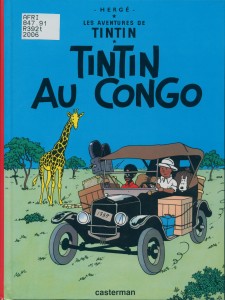 Hergé. Tintin Au Congo. |
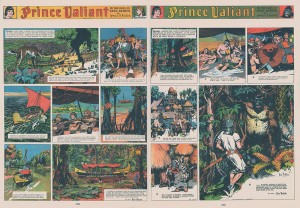 Hal Foster. Prince Valiant vol. 6: Journey to Africa. Westlake Village, CA: Fantagraphics, 1989. |
Award-winning cartoonist Hal Foster, who first found fame drawing Tarzan comic strips in the late 1920s and the 1930s, returned to a fictional Africa briefly in his iconic Sunday comic strip Price Valiant. Here the medieval knights encounter “dragons” (crocodiles) and an “ogre” (a gorilla). |
| This comic book features first appearance of the Black Panther, alias T’challa, king of the scientifically sophisticated (and fictitious) African country of Wakanda. The Black Panther was the first black superhero in mainstream American comic books. |
 Stan Lee and Jack Kirby et al. Fantastic Four #52. New York: Marvel Comics, July 1966. Page 4. |
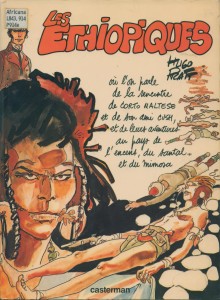 Hugo Pratt. Les Ethiopiques. Tourai, Belgium: Casterman, 1978. |
Italian cartoonist Hugo Pratt’s books featuring Corto Maltese, a sailor-explorer, are among the most popular comics in Europe. Three of this book’s four stories are set on the east coast of Africa around the year 1918. |
| American cartoonist and educator Burne Hogarth drew the Tarzan Sunday newspaper strip from 1937 to 1945 and then again from 1947 to 1950. In Jungle Tales of Tarzan, one of his returns to character in the 1970s, Hoagarth augments his traditionally sinewy figure work with innovative graphic storytelling and design techniques. |
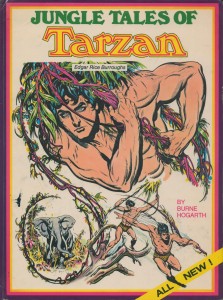 Burne Hogarth and Edgar Rice Burroughs. Jungle Tales of Tarzan. |
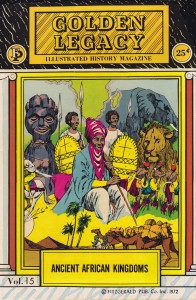 Joan Bacchus, Robert Fitzgerald, and Howard Darden et al. Golden Legacy vol. 15: Ancient African Kingdoms. New York: Fitzgerald Publishing Co., 1972. |
Originally published between 1966 and 1976, the Golden Legacy comic book series is still in print and continues to bring black history to young readers. This issue focuses on the ancient kingdoms of Kush-Nubia, Ghana, Mali, Songhay, Kanem-Bornu, and Benin. |
Posters |
|
 Kouakou #63. Paris: Segedo, 1977. |
|
See also: Visions Introduction – Further Reading



